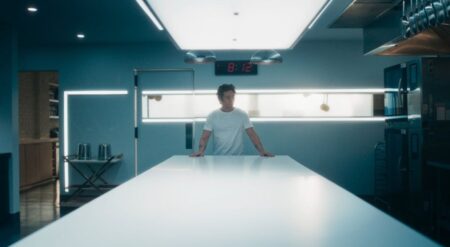Drive To Survive Season 6 is a Netflix Sports documentary. The executive producers are James Gay-Rees and Paul Martin. This is the companion piece to the 2023 Formula One season, following the fastest and most glamorous sport on the planet.
The documentary’s format and structure has become synonymous with the sport now, and that has both its benefits and downfalls. Drive To Survive is a ten-episode season. Each episode focuses on one or two teams competing for the same position in the championship. The episodes feature interviews with drivers, team principals and several other figures. That familiarity with the format is comforting and easy to settle into. The season’s most significant plot points are condensed into those ten episodes, with a storyline crafted in each. It’s incredibly digestible, especially for those who may not follow every race when they happen.
But on the downside, the production team has yet to address issues that have plagued the previous five seasons. The non-linear narrative for the episodes is jarring. The show does not move from race to race. Instead, it presents the individual stories and picks and chooses the critical races for that particular arc. For example, the second episode may be early for the documentary but goes deep into the year with one of the most prominent occurrences of the whole season. It was a dramatic event, but the revelation came too quickly. And it’s harsh because of how it’s placed in this way to bring back a fan favorite to the documentary, a person the filmmakers seem to adore having on the show.
As with every year, Drive To Survive Season 6 brings old and new figures in front of the camera. Some characters have been involved right from the beginning. Christian Horner, CEO of Red Bull Racing, and Pierre Gasly, French driver for the Alpine team, are examples of this. Their energy works well in the episodes because of their comfort with the cameras. Horner has always used the Netflix series to his advantage. He can say things about his competitors and commend himself and his team. But some of what he does in front of the camera, especially when his home life is involved, is extremely close to being like The Office, making the audience cringe.
Other returning members include Guenther Steiner, who has existential crises during the season, and Daniel Ricciardo, who returns to racing. These men and their unique circumstances are great examples of the depth the show goes into when dealing with the mental state of those who work in Formula One. Famous F1 journalist Will Buxton fills in gaps, providing context and explanations to much of the show’s intricacies. But there are new contributors for that purpose as well, namely former Williams Team Principal Claire Williams and racing driver Danica Patrick. Both offer fresh voices to the series, especially when they don’t have direct connections or are working on their agenda.

The relationship between the show and the drivers/others is undoubtedly attractive. The Netflix crew entrench themselves in the racing paddock, but their intrusive nature doesn’t sit well with many involved. Lewis Hamilton, one of the most significant names in the sport’s history, routinely jokes about them eavesdropping. Whilst the comments are passed off sarcasm and jokes, one can’t help but consider whether there is truth to them.
The appearance of Netflix cameras and capturing moments have obliterated the privacy of vast amounts of the sport. Drive To Survive is one of the most internal fly-on-the-wall documentaries, and that must be difficult for those who don’t like the cameras. In the Mclaren episode, the filmmakers follow CEO Zak Brown into meetings with the executive chairman and other high-ranking figures. These are fascinating parts, but it’s easy to question the validity and authenticity of the statements. Max Verstappen, current world champion, refused to cooperate for many years out of contempt and concerns over the documentary taking lines out of context.
Even in Season 6, some montages craft a storyline that raises eyebrows, particularly Lando Norris. There are several instances of drivers speaking out against their teams with alarming statements and bold attitudes. Whilst these men have their egos, viewers should consider the editing of their conversations before judging their personalities. That editing is what pulls the audience to the show. In the races, Drive To Survive captures the best moments of such an exhilarating sport. Parts missed during the broadcast get the spotlight, with greater focus on a specific team of driver in a sea of noise and carnage. The race camera angles are sometimes better than during live presentations. During the rest of the episodes, depicting the machinations and activities of the team staff and drivers, the music and cuts perfectly capture the mood and intentions the filmmakers want to convey.
Drive to Survive Season 6 is always looking for stories. That may not sit well with the athletes just trying to do its job, but the documentary series always tries to find avenues to create a storyline through the racing season. The picking and choosing aspect of the show can be frustrating for fans as it often conflates and manipulates the truth. But those who rely on the sport for their livelihood may not realize the programme’s benefits. It has brought millions of new and interested eyes onto the cars and the drivers and made celebrities out of those behind the scenes. It constantly captures the spectacle of the situations.
Drive to Survive Season 6 is streaming now on Netflix.
Drive to Survive Season 6
-
Rating - 7.5/107.5/10
TL;DR
Drive to Survive Season 6 is always looking for stories. That may not sit well with the athletes just trying to do their job, but the documentary series always tries to find avenues to create a storyline through the racing season.







